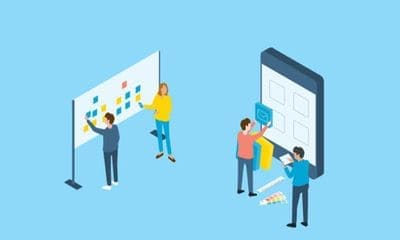With functional coverage and economics, ergonomics has become one of the very first criteria for choosing a digital purchasing solution. To meet expectations and differentiate themselves, publishers have put a lot of effort into the comfort and ease of use of their tool.
Digital purchasing solutions have long been difficult to grasp and have become more intuitive and user-friendly in recent years. The reason: the pressure put on publishers by companies that, after focusing on the capabilities of tools in terms of value creation (savings, simplification of processes, security of processes, control of risks, etc.), understood that the "user experience" was decisive for improve adoption rates and thus the return on investment of their project. The results of the latest edition of the Acxias Barometer, measuring the satisfaction of user companies with the tools and their publisher, confirms this. To the question regarding the criteria for choosing the solution, if the first three answers have not changed since 2012, ergonomics now tops the list with 45% of citations.
It outpaces the cost of the project (40%), which remains in second place, and functional coverage (32.5%), although it does, knowing that adequacy of needs is considered an implicit condition of selection by most respondents. In any case, the trend is not illogical. Indeed, with the democratization of Internet applications and private uses of technology, users no longer accept tools with outdated interfaces in the professional setting. The explosion in the use of smartphones and other tablets has further amplified their feelings. And put additional pressure on publishers forced to follow the trend, to offer web interfaces or "responsive design", while using e-purchase tools mobility is constantly developing.
However, reformagateing and lightening screens requires an investment of time and money that can be important. Indeed, the simpler a tool is for users, the more complicated it is for development teams: it is necessary to completely review interfaces, in terms of graphics, architecture, management protocol, etc. An even greater complexity for the historical publishers of the market, handicapped by their extensive functional coverage, the technologies used or the fact that their offer is sometimes based on an assembly of several solutions. The investment required for an ergonomic upgrade is all the more consequential since the comfort of use is not just a matter of aesthetics or intuitiveness. Performance also counts, which can be improved by multiplying tricks: partial display of screens, cache of static elements, load balancing mechanisms, etc.
Beyond corporate demand, specialist publishers also understood that ergonomics was a way to stand out from the competition. In particular, that of ERPs, which are increasingly covering purchases. Today, whether it's a renewal project or the first computerization of the function, offering a tool that offers the best "user experience" makes it easier to win.
But what exactly do companies want? User friendly interfaces, first, in terms of screen aesthetics: colors, shapes, buttons, images, etc. But above all, they expect improvements in terms of intuitiveness and functional logic, in a homogeneous approach when several modules make up the solution. Companies also want more flexibility, to reorganize the screens offered as standard or customize them, when the tools do not offer pages themselves that adapt to the profile of the user according to the hierarchical position, the operational role, the frequency of use, etc.
Generally speaking, it's about providing quick access to features and information that are unique to everyone's need, with minimal clicks. Or make it easier to interact with other applications, starting with Excel-type desktop software. Helping with typing or searching also becomes the rule, as on the Internet and any mobile phone. Finally, it is a matter of accompanying the user, when taking over new features or in case of blockage. The latest innovations at Ivalua and SAP Ariba go, for example, in that direction. The first launched Ivalua Academy, an e-learning center for all the features of its suite, for all user profiles. As for SAP Ariba, its " Guided Buying offers a new ergonomics and kinematics, as well as a set of tools (documentation, tutorials, contextualized help, etc.) for facilitate the appropriation of its solutions. BravoSolution, Determine and other SynerTrade are not left out, also offering more and more streamlined and intuitive interfaces, with contextual help menus.

